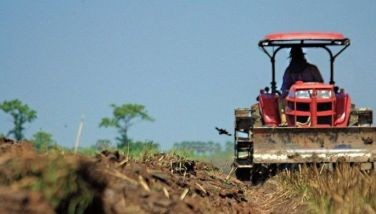Wild sunflower a rich source of nitrogen for rice
December 26, 2004 | 12:00am
It’s the Yuletide Season, and at this time of the year wild sunflowers come a-bloom in the northern Luzon highlands.
We remember that Christmas time a noted lady journalist friend, Jullie Yap Daza, devoted a whole inspiring column about the radiant yellow sunflowers adorning the long and winding road to Baguio City.
And was it Henry Wadsworth Longfellow who once wrote: "I see the world in a grain of sand, and beauty in a wild flower."
But there’s more to wild sunflowers than being a sight to behold by nature lovers.
Among farmers in the Cordillera, it is a rich source of nitrogen for rice.
For centuries, farmers in Ifugao and Mountain Province has been using this plant scientifically known as Tithonia diversiflia to fertilize rice, vegetables, and sweet potato.
The fertilizer value of wild sunflower has been confirmed in recent researches done by the Department of Agriculture-Philippine Rice Research Institute (DA-PhilRice).
In one study, PhilRice noted that the yield of rice fertilized with 0.54 tons per hectare of fresh sunflower leaves was compatible with the yield of crops fertilized with azolla (known as a "fertilizer plant") and 40-60 nitrogen kilogram per hectare and azolla.
PhilRice researchers have found that sunflower leaves have high nitrogen content (2.9 percent oven dry weight) and that fresh sunflower can given an equivalent of 60 N kg/ha.
In rice seedbeds, wild sunflower is incorporated into the seedbed to serve as fertilizer for the rice seedlings. From 15 to 25 pieces of sunflower tops are needed to fertilize a square meter of the seedbed.
In irrigated lowland rice paddy, sunflower is applied eight days before transplanting or during the last harrowing to maximize the nitrogen it releases.
Aside from being locally available and for free, wild sunflower easily decomposes (7-10 days) and also hastens the decomposition of other weeds. In sloping mountains, it helps prevent soil erosion.
Wild sunflower can likewise be used as pest control agent, floor polish, and firewood. In the Cordillera, it has been reported to control aphids in vegetables and earthworms in rice paddies. – RAF
We remember that Christmas time a noted lady journalist friend, Jullie Yap Daza, devoted a whole inspiring column about the radiant yellow sunflowers adorning the long and winding road to Baguio City.
And was it Henry Wadsworth Longfellow who once wrote: "I see the world in a grain of sand, and beauty in a wild flower."
But there’s more to wild sunflowers than being a sight to behold by nature lovers.
Among farmers in the Cordillera, it is a rich source of nitrogen for rice.
For centuries, farmers in Ifugao and Mountain Province has been using this plant scientifically known as Tithonia diversiflia to fertilize rice, vegetables, and sweet potato.
The fertilizer value of wild sunflower has been confirmed in recent researches done by the Department of Agriculture-Philippine Rice Research Institute (DA-PhilRice).
In one study, PhilRice noted that the yield of rice fertilized with 0.54 tons per hectare of fresh sunflower leaves was compatible with the yield of crops fertilized with azolla (known as a "fertilizer plant") and 40-60 nitrogen kilogram per hectare and azolla.
PhilRice researchers have found that sunflower leaves have high nitrogen content (2.9 percent oven dry weight) and that fresh sunflower can given an equivalent of 60 N kg/ha.
In rice seedbeds, wild sunflower is incorporated into the seedbed to serve as fertilizer for the rice seedlings. From 15 to 25 pieces of sunflower tops are needed to fertilize a square meter of the seedbed.
In irrigated lowland rice paddy, sunflower is applied eight days before transplanting or during the last harrowing to maximize the nitrogen it releases.
Aside from being locally available and for free, wild sunflower easily decomposes (7-10 days) and also hastens the decomposition of other weeds. In sloping mountains, it helps prevent soil erosion.
Wild sunflower can likewise be used as pest control agent, floor polish, and firewood. In the Cordillera, it has been reported to control aphids in vegetables and earthworms in rice paddies. – RAF
BrandSpace Articles
<
>
- Latest
Latest
Latest
March 4, 2024 - 3:32pm
By Ian Laqui | March 4, 2024 - 3:32pm
March 4, 2024 - 2:12pm
By Kristine Daguno-Bersamina | March 4, 2024 - 2:12pm
February 17, 2024 - 2:31pm
February 17, 2024 - 2:31pm
February 13, 2024 - 7:24pm
By Gaea Katreena Cabico | February 13, 2024 - 7:24pm
February 13, 2024 - 7:17pm
By Ian Laqui | February 13, 2024 - 7:17pm
Recommended





























